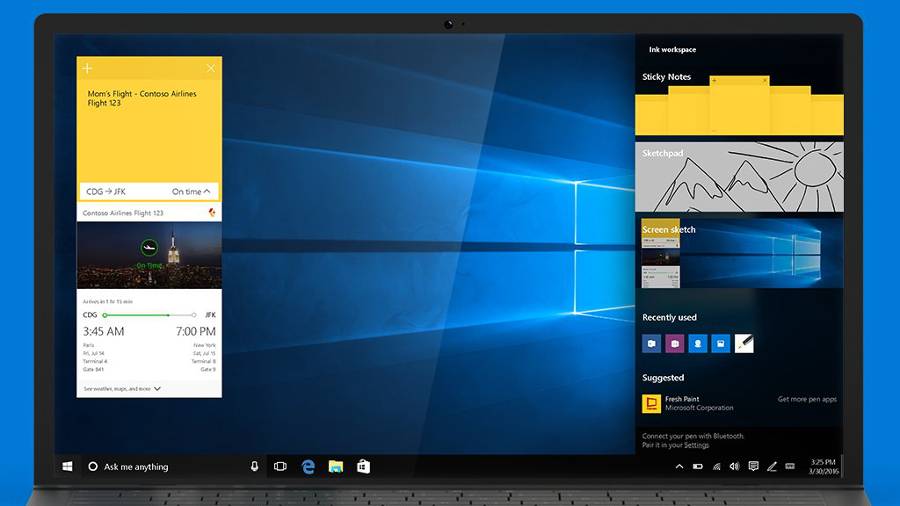

Nine months on and Windows as a Service is starting to deliver.
Windows 10 really is the last version of Windows, but that doesn’t matter because it’s going to keep on changing and improving. Users brave enough to be Windows Insiders can get those changes as soon as they’re ready to try out (which may or may not mean they’re actually ready to use).
More cautious users – and businesses – will stick to the major updates and so far, those seem to come about twice a year. The last was the November update (which Microsoft has now set as a Current Branch for Business release, which means that PCs running the release version of Windows from last July will start updating soon).
Building on Windows 10
The next major release will be the Anniversary Update this summer. This gives us a good idea of how Windows as a Service is shaping up. The Anniversary Update has a mix of features that were promised in Windows 10 but haven’t yet arrived, tweaks and improvements to existing features, and new features that Microsoft announced at the Build conference.
The most unexpected of those new features is the Windows Subsystem for Linux, which allows you to run a number of Linux binaries like the Bash shell (and as Terry Myerson noted during the announcement, we can expect “more coming soon”).
That’s aimed at developers who need to connect to and manage Linux servers, rather than mainstream users – when you hear Microsoft talking about 1,000 new features in the Anniversary Update, those are new features in the Windows SDK.
Also new, and again aimed mostly at developers, is support for Docker containers in Windows 10 as well as in Windows Server 2016. That means a developer working with containers can test them on a Windows 10 PC rather than having to work with a Windows Server system all along.
Listening to feedback
Microsoft is clearly using the telemetry the company gets from its newest operating system, and the feedback from Windows Insiders, to develop Windows 10 – small changes and some major new features that users have been asking for are being implemented.
These include tweaks to the Start menu, improving the All Apps list and bringing back the full-screen apps list in tablet mode. The Action Center gets more interactivity – including mirroring alerts from Android phones and letting you reply to text messages from your PC, plus showing notifications from websites as well as apps. Notifications should finally sync between different devices rather than having to be dismissed on every device you use individually, and you can also limit how chatty apps can get by choosing how many notifications they can send.
Cortana also gets chattier, with suggestions for things she can do using the new integration of chat bots, so if you’re working late you might see a dialog offering to order dinner or book an Uber for you. Some Cortana features will also work from the lock screen, so you don’t have to unlock your PC to set a reminder.
Pen-tastic plans
Microsoft’s deal with Wacom to build a pen that will work across multiple PC screens (using the built-in digitiser rather than just capacitive touch) should bring pens to many more laptops and tablets. That will make the new Ink system more useful – it works with Cortanaso you can write ‘remind me next Monday to call Susan’ and get a reminder on that day. And you will be able to use pen and touch at the same time, so you can move an on-screen ruler – which could be something as complex as a curve tool in Illustrator – as you draw, or scroll the canvas without putting down the pen in your other hand.
We’re also getting lots of new display options: picture-in-picture display, being able to project your screen to another PC from a Continuum phone or another PC, plus remote display from an IoT Core device for remote control.
They’re not major features for most users, but if you need them they’ll be very useful – and they’re exactly the kind of tricky features that would likely have been cut from a new version of Windows during the development cycle because they were hard to get right in a fixed schedule. Now the Windows team can keep working on them, and if necessary, wait for new hardware to support them.
[source :-in.techradar]

